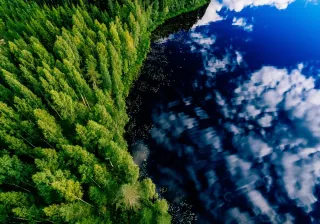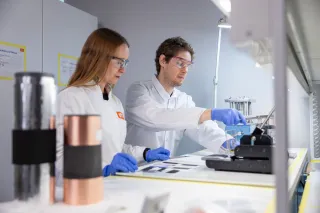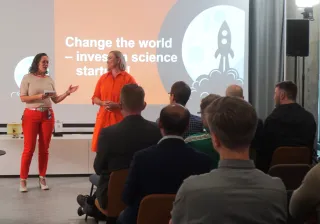Petteri Orpo's government has raised technological carbon sinks to the government programme. As the theme is significant for Finland's climate policy, it is important that the related terms and definitions are clear in public discussion. When considering climate change mitigation, it is essential to understand that technological carbon sinks cannot replace emission reduction measures, but only supplement them.
In its latest report, the Intergovernmental Panel on Climate Change (IPCC) has shown that in addition to drastic emission reductions, both technological and natural carbon sinks are needed to limit global warming to 1.5 or 2 degrees Celsius.
Technological carbon sinks refer to the removal of carbon dioxide from the atmosphere by technological means and its storage in permanent geological carbon storages. These means include e.g. direct capture of carbon dioxide from the atmosphere through chemical processes – i.e. DACCS technology – or indirect capture of carbon dioxide by storing carbon dioxide released from the combustion of sustainably produced forest or other biomass. As the biomass has grown, it has removed carbon dioxide from the atmosphere, which is then captured and stored permanently after release in combustion. This results in a so-called negative emission.
Carbon dioxide storage requires Nordic cooperation
Finland has several bioenergy plants, as well as pulp and bioproduct factories where carbon dioxide emitted from biomass could be captured. Carbon dioxide could potentially be stored, for example, in underground geological formations in Norwegian sea areas, for which Nordic cooperation is needed. Further studies are needed on the potential for carbon dioxide storage in minerals in the soil or in products, such as concrete. In particular, ensuring the stability of storage is essential. The chemical processes for carbon dioxide removal are also under development, and this will provide Finland with opportunities as a technology developer and exporter.
The government programme also mentions the utilisation of carbon dioxide in products. Carbon dioxide removed from the atmosphere in the above-mentioned ways, can also be stored in short-life-cycle or long-life-cycle products, such as plastics. However, short-life-cycle products cannot function as technological carbon sinks, as they rapidly release the carbon dioxide back into the atmosphere. For particularly long-lasting products, it should be determined, whether the carbon stored in them could be considered in emission inventories, in the same way as the carbon contained in wood products.
Fossil carbon dioxide capture is also necessary to mitigate climate change
The capture and storage of fossil carbon dioxide does not produce technological carbon sinks, as it does not remove carbon dioxide from the atmosphere, but only prevents carbon dioxide from entering the atmosphere. However, fossil carbon dioxide capture is an important means of mitigating climate change, for example, for industrial processes in which reducing fossil emissions is otherwise technically very difficult or expensive. The utilisation of fossil carbon dioxide in products can create emission reductions, but their verification always requires a case-specific life cycle assessment.
Technological carbon sinks should not replace emission reduction measures in the effort sharing sector nor measures in the land use sector, as these measures are also needed to achieve climate neutrality and later climate negativity. Many of the emission reduction measures in these sectors are also likely to be cheaper and faster to implement than producing technical carbon sinks. Technological sinks also do not compensate for other environmental impacts, such as biodiversity impacts, related e.g. to the reduction of forest carbon sinks.
Nevertheless, technological carbon sinks can contribute to accelerating Finland's climate action. Therefore, feasible policy mechanisms and regulation needs must be investigated urgently.





